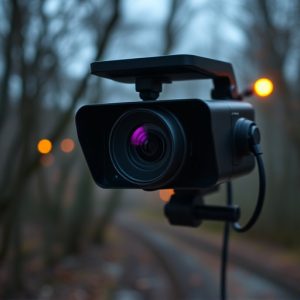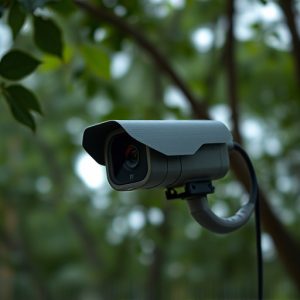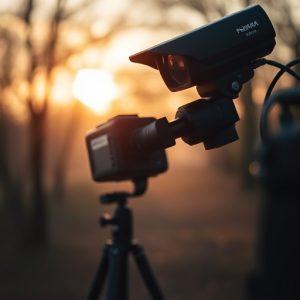Wireless Spy Camera Phone Apps: Spotting Covert Recording Techniques & Ethical Implications
Using wireless spy camera phone apps for covert recording raises serious legal concerns, especially…….
Using wireless spy camera phone apps for covert recording raises serious legal concerns, especially in regions with strict privacy laws like GDPR and CCPA. Misuse can lead to civil lawsuits and criminal charges. While these apps offer advanced features, responsible and ethical use is vital, considering their impact on personal and professional lives. Awareness, transparency, and respect for privacy rights are essential when employing such technology, ensuring compliance with local laws and mitigating legal risks.
In an era where privacy is a growing concern, understanding covert recording—the practice of secretly capturing audio or visual content—is more critical than ever. This guide delves into the world of covert recording spot identification, shedding light on its legal implications and the surge in wireless spy camera phone apps. We explore effective methods to identify potential recording spots, advanced techniques for detection, and ethical considerations, empowering readers with knowledge to counter such clandestine activities.
- Understanding Covert Recording and Its Legal Implications
- The Rise of Wireless Spy Camera Phone Apps
- Identifying Potential Spots for Covert Recording
- Advanced Techniques for Spot Detection
- Ethical Considerations and Countermeasures
Understanding Covert Recording and Its Legal Implications
Covert recording, also known as hidden camera or secret surveillance, involves capturing audio and/or visual data without the consent of all parties involved. This practice raises significant legal implications, especially in regions with strict privacy laws like the General Data Protection Regulation (GDPR) in Europe or the California Consumer Privacy Act (CCPA) in the United States. Using a wireless spy camera phone app to record conversations or activities without disclosure can lead to severe consequences, including civil lawsuits and criminal charges for invasion of privacy.
In today’s digital age, many individuals rely on smartphones equipped with advanced features like high-resolution cameras and audio recording capabilities. However, it’s crucial to understand that just because a feature is built into a device doesn’t mean it should be used without ethical or legal considerations. The misuse of wireless spy camera phone apps for covert recording can have far-reaching consequences, impacting personal relationships, professional ethics, and even employment prospects. Awareness and transparency are key in navigating the legal grey areas surrounding this technology to ensure responsible usage.
The Rise of Wireless Spy Camera Phone Apps
The proliferation of smartphone technology has led to a significant shift in covert recording methods, with one of the most notable developments being the rise of wireless spy camera phone apps. These innovative applications allow users to secretly capture video and audio footage using their mobile devices, transforming them into powerful surveillance tools. The convenience and accessibility of these apps have made it easier than ever to identify potential recording spots, as individuals can now discreetly test environments with just a tap on their screen.
Wireless spy camera phone apps offer a range of features, including real-time monitoring, remote access, and high-definition video recording. This technology has not only become popular among privacy-conscious individuals but also finds its use in professional settings for security purposes. As such, it’s crucial to be aware of the legal implications and ethical considerations surrounding their usage, ensuring that personal privacy rights are respected while leveraging the advantages these apps provide.
Identifying Potential Spots for Covert Recording
Identifying potential spots for covert recording is a crucial step in setting up hidden surveillance. With advancements in technology, tools like wireless spy camera phone apps have made it accessible to capture footage discreetly. These apps, often disguised as regular photography or video applications, offer remote access and real-time monitoring capabilities. By exploring various locations, from quiet corners of offices to hidden crevices in public spaces, individuals can take advantage of these apps’ portability and versatility.
Potential spots could include areas with limited visibility where traditional cameras might be less effective. For example, tight alleyways, dense shrubbery, or small gaps behind furniture can serve as ideal hiding places for wireless spy cameras. Additionally, objects like potted plants, clock radios, or even fake rocks designed for surveillance can be strategically placed to capture footage without raising suspicion.
Advanced Techniques for Spot Detection
In the advanced realm of spot identification, the integration of wireless spy camera phone apps has revolutionized covert recording techniques. These innovative applications empower users to detect and locate hidden cameras with remarkable accuracy. By leveraging sophisticated algorithms and real-time signal processing, these apps can pinpoint the exact position of a wireless spy camera, even in complex environments. This technology is particularly valuable for security professionals, privacy advocates, and individuals seeking to protect their personal spaces from potential surveillance.
The process involves scanning for radio frequency signals emitted by the hidden cameras and analyzing unique signatures to identify their presence. Advanced techniques, such as direction finding and signal strength measurements, allow users to determine not only the location of the camera but also its orientation. This comprehensive approach ensures that individuals can take proactive measures to secure their surroundings, rendering covert recording much more challenging and less effective.
Ethical Considerations and Countermeasures
When utilizing wireless spy camera phone apps for covert recording, ethical considerations come to the forefront. These applications, designed for remote surveillance, raise concerns about privacy and consent. It is essential to respect individuals’ right to privacy and ensure that any recorded content is obtained legally and with proper authorization. Using such apps for unauthorized surveillance can have severe legal implications and infringe on personal freedoms.
To mitigate these ethical issues, users must implement countermeasures. Obtain explicit permission from all parties involved before recording, ensuring they are aware of the process. Practice transparency by disclosing the presence of the spy camera app to prevent any surprise or unexpected recordings. Additionally, ensure compliance with local laws and regulations regarding surveillance and data privacy to uphold ethical standards and protect oneself from potential legal repercussions.
In an era where technology advances rapidly, the ability to identify and prevent covert recording has become a critical skill. This guide has explored the world of hidden cameras, from understanding their legal boundaries to delving into advanced detection techniques. With the rise of wireless spy camera phone apps, it’s essential to be aware of potential spots for such devices and take proactive measures. By staying informed about these methods, individuals can protect their privacy and personal spaces. Ethical considerations are a key aspect, emphasizing the importance of using this knowledge responsibly and avoiding invasions of privacy.


